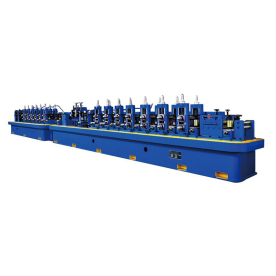[Industrial All-in-one High Frequency Welder]Revolutionizing Manufacturing: The Role of Industrial All-in-One High Frequency Welders in Modern Production Processes
News 2024-8-28
In the dynamic landscape of modern manufacturing, the demand for efficient and versatile welding solutions is continuously on the rise. As industries evolve, traditional welding techniques struggle to keep pace with the need for precision, speed, and adaptability. Enter the Industrial All-in-One High Frequency Welder—a groundbreaking innovation that is transforming the way manufacturers approach welding tasks. This article explores the significance, functionality, and advantages of these advanced welding systems, shedding light on their increasing importance across various sectors.

Revolutionizing Manufacturing: The Role of Industrial All-in-One High Frequency Welders in Modern Production Processes

Revolutionizing Manufacturing: The Role of Industrial All-in-One High Frequency Welders in Modern Production Processes
Industrial All-in-One High Frequency Welders incorporate this advanced technology into a single unit, offering manufacturers an all-encompassing solution for their welding requirements. These machines typically combine multiple functions such as welding, cutting, and shaping, enabling operators to perform various tasks without the need for multiple pieces of equipment. This not only saves space in the manufacturing environment but also streamlines the production process, enhancing overall efficiency.

Revolutionizing Manufacturing: The Role of Industrial All-in-One High Frequency Welders in Modern Production Processes
1. **Versatility**: One of the primary benefits of Industrial All-in-One High Frequency Welders is their versatility. With the ability to handle different materials and perform multiple functions, these welders are ideal for diverse applications. Whether it is producing packaging materials, automotive parts, or textile products, manufacturers can rely on a single machine to meet their needs.
2. **Efficiency**: These welders significantly improve production efficiency. The speed at which high frequency welding can be performed allows for rapid production cycles, reducing lead times and meeting tight deadlines. Moreover, the integration of multiple functions into one machine minimizes downtime associated with switching between different equipment.
3. **Quality Consistency**: High frequency welding technology ensures a high degree of precision in the welding process. As the welder operates at consistent temperature and pressure settings, manufacturers can achieve high-quality seams without the risk of overheating, charred edges, or weak bonds. This consistent quality is particularly crucial in industries where safety and durability are paramount, such as automotive and medical device manufacturing.
4. **Reduced Labor Costs**: The all-in-one nature of these welders often translates to reduced labor costs. With a simplified setup and streamlined operations, fewer operators may be needed to manage the welding process. Additionally, operators can quickly learn to use a single machine that performs multiple tasks, enhancing workforce efficiency.
5. **Lower Operational Costs**: By investing in an Industrial All-in-One High Frequency Welder, manufacturers can reduce costs associated with energy consumption and maintenance. These machines are typically designed for energy efficiency, consuming less electricity than multiple separate welding machines would require.
Applications Across Industries
The applications of Industrial All-in-One High Frequency Welders extend far and wide. In the automotive sector, they are used to produce components like dashboards and seat covers efficiently. The packaging industry leverages these welders to create high-quality seals for plastic films and bags, ensuring product integrity and shelf life. Moreover, in the textile industry, they facilitate the seamless bonding of synthetic fabrics, vital for creating durable and high-performance garments.
Conclusion
The Industrial All-in-One High Frequency Welder is not just a technological advancement; it represents a shift in manufacturing philosophy towards greater efficiency, quality, and versatility. As industries continue to face increasing demands for production speed and precision, these welders are poised to play a critical role in shaping the future of manufacturing. Companies that embrace this innovative technology will not only enhance their operational capabilities but also gain a competitive edge in an ever-evolving market.
